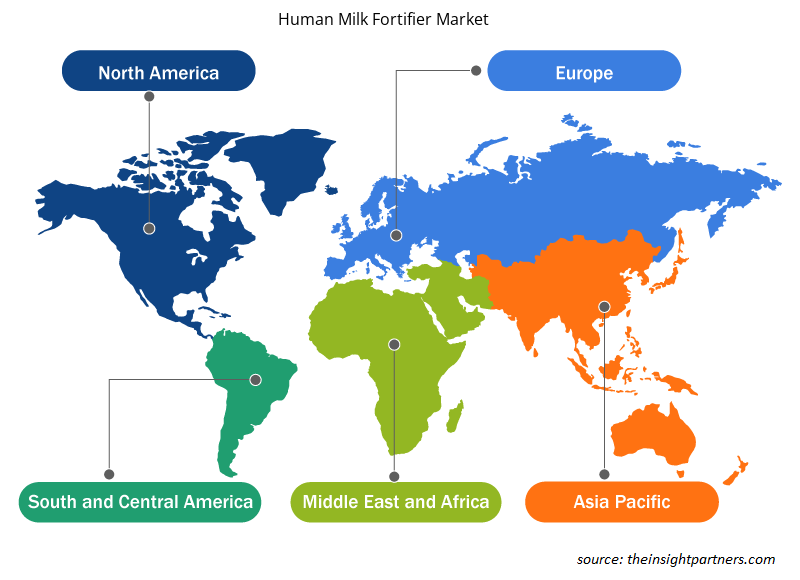[調査レポート] 母乳強化剤市場規模は、2022年の2億7,467万米ドルから2030年には5億6,635万米ドルに成長すると予想されており、2023年から2030年にかけて9.6%のCAGRを記録すると予測されています。
市場洞察とアナリストの見解:
母乳強化剤は、乳児に追加のカロリー、電解質、ビタミンを与えるために母乳に加えられる栄養補助食品です。栄養摂取を確保し、全体的な発育と成長を改善するために、新生児集中治療室 (NICU) の早産児に処方されることが多いです。また、低体重の乳児にも母乳強化剤が処方されます。
成長の原動力と課題:
近年、ライフスタイルの変化や糖尿病や高血圧などの慢性疾患により、早産の数が増加しています。米国疾病管理予防センター(CDC)によると、2021年に米国で生まれた乳児の約10人に1人が早産に悩まされました。米国の早産率は、2020年の10.1%から2021年には10.5%に上昇しました。世界保健機関(WHO)は、2020年に約1,340万人の乳児が生まれたと推定しています。早産の合併症は5歳未満の乳児の主な死亡原因であり、2019年には約90万人が早産で亡くなりました。早産児は、呼吸障害、摂食障害、発達遅延、脳性麻痺、視覚および聴覚障害を抱えている可能性があります。
早産の増加により、乳児の適切な成長と発達のための母乳強化剤の需要が急増しています。早産児の多くは、母乳に追加の栄養素を加える必要があります。強い骨と健康な臓器を作るために、タンパク質、カルシウム、リン、塩分を多く必要とすることがよくあります。母乳強化剤は、乳児にこれらの追加の栄養素を提供するのに役立ちます。母乳強化剤では、乳児に与える前に追加の栄養素が母乳に加えられます。したがって、早産の急増は、母乳強化剤市場の成長を促進します。
政府は、新生児の安全を確保し、製品の品質基準を維持するために、母乳強化剤の製造と使用に関連するさまざまな規則と規制を課してきました。カナダでは、母乳強化剤は食品医薬品規則 (FDR) に基づいて規制されています。FDR、パート B、ディビジョン 25 (B.25.019) 規則は、適切な医学的監督下での母乳強化剤の適切な販売を確保するために実施されています。さらに、母乳強化剤は、カナダ保健省に市販前申請書を提出する必要があります。セクション B.25.011、サブセクション (a) から (n) では、新しい母乳強化剤の規制要件を規定しています。米国では、母乳強化剤は免除乳児用調製粉乳に分類されていますが、製造業者は、製品の付録に記載されている各ミネラルとビタミンの量を含む栄養素の表示を保証する米国食品医薬品局 (FDA) の要件を満たす必要があります。このような規制の実施により、母乳強化剤の製造が妨げられ、市場の成長が抑制されています。premarket submission. Section B.25.011, subsections (a) to (n), specify the regulatory requirements for a new human milk fortifier. In the US, human milk fortifier is classified as exempt infant formula; however, the manufacturers have to meet the requirements of the US Food and Drug Administration (FDA), which ensures the nutrient declaration, including the amount of each mineral and vitamin listed in annexes of the product. Implementing such regulations has hampered human milk fortifier manufacturing, restraining market growth.
要件に合わせてレポートをカスタマイズする
このレポートの一部、国レベルの分析、Excelデータパックなど、あらゆるレポートを無料でカスタマイズできます。また、スタートアップや大学向けのお得なオファーや割引もご利用いただけます。
-
このレポートの主要な市場動向を入手してください。この無料サンプルには、市場動向から見積もりや予測に至るまでのデータ分析が含まれます。
レポートのセグメンテーションと範囲:
世界の母乳強化剤市場は、形態、流通チャネル、および地域によって区分されています。母乳強化剤市場は、形態に基づいて粉末と液体に区分されています。母乳強化剤市場は、流通チャネルに基づいてオンラインとオフラインに分類されています。世界の母乳強化剤市場は、地域によって北米、ヨーロッパ、アジア太平洋、中東およびアフリカ、南米および中米に大まかに区分されています。
セグメント分析: Analysis:
形態に基づいて、母乳強化剤市場は粉末と液体に区分されます。粉末セグメントは、予測期間中に高い CAGR を記録すると予想されます。粉末形態の母乳強化剤は、母乳の栄養成分を補充し、強化します。強化母乳は、未熟児または医学的に虚弱な乳児に処方されます。人々は、保管、取り扱い、および準備の利便性から、粉末の母乳強化剤を好みます。さらに、液体製品よりも保管と輸送が容易で、保存期間が長くなります。
流通チャネルに基づいて、母乳強化剤市場はオンラインとオフラインに分類されます。オンラインセグメントは、予測期間中に高い CAGR を記録すると予測されています。オンライン小売店は、自宅でくつろぎながら買い物ができるという利便性を伴います。親は、店舗に行かなくても、いつでも自分に合ったタイミングで母乳強化剤を閲覧して購入できます。また、オンラインプラットフォームでは、幅広い強化剤へのアクセスが提供されることが多く、親はさまざまなオプションを検討して、最も適切な製品を選択できます。さらに、母乳強化剤は地元の店や専門店では入手できない場合があります。オンラインストアでは、より広範な在庫にアクセスできるため、消費者は地元で入手できない特定のブランドを簡単に見つけることができます。顧客のレビューと詳細な製品情報は、親がより多くの情報に基づいた決定を下すのに役立ちます。製品を使用した他の親のレビューを読むことで、製品の有効性と適合性についての洞察を得ることができます。オンライン小売業者は、実店舗よりも間接費が低いため、競争力のある価格を提供することがよくあります。これは、経済的なオプションを探しているユーザーや、さまざまな販売者の価格を比較しているユーザーに役立ちます。さらに、赤ちゃんの健康について公に話すことに敏感なユーザーの中には、母乳強化剤を慎重に購入することを好む人もいます。オンライン チャネルではプライバシーが確保され、慎重に購入および配送することができます。
地域分析:
地理に基づいて、米粉市場は、北米、ヨーロッパ、アジア太平洋、中南米、中東およびアフリカの5つの主要地域に分かれています。北米の市場は、2022年に約8,582万米ドルと評価されました。アジア太平洋地域は、予測期間中に約10.4%のCAGRを記録すると推定されています。アジア太平洋地域では可処分所得が上昇しているため、母乳強化剤などの高級ヘルスケア製品を購入できる親が増えています。親は子供の健康と幸福を改善できる製品に投資する意欲があるため、これが市場の成長に貢献しています。さらに、アジア太平洋地域全体で新生児集中治療室(NICU)などのヘルスケアインフラが拡大したことで、母乳強化剤市場の成長に好ましい環境が整いました。病院や医療施設は未熟児に専門的なケアを提供するための設備が整っており、母乳強化剤の需要が高まっています。
母乳強化剤市場の地域別分析
予測期間を通じて母乳強化剤市場に影響を与える地域的な傾向と要因は、Insight Partners のアナリストによって徹底的に説明されています。このセクションでは、北米、ヨーロッパ、アジア太平洋、中東、アフリカ、南米、中米にわたる母乳強化剤市場のセグメントと地理についても説明します。

- 母乳強化剤市場の地域別データを入手
母乳強化剤市場レポートの範囲
| レポート属性 | 詳細 |
|---|---|
| 2022年の市場規模 | 2億7,467万米ドル |
| 2030年までの市場規模 | 5億6,635万米ドル |
| 世界のCAGR(2022年 - 2030年) | 9.6% |
| 履歴データ | 2020-2021 |
| 予測期間 | 2023-2030 |
| 対象セグメント |
フォーム別
|
| 対象地域と国 |
北米
|
| 市場リーダーと主要企業プロフィール |
|
母乳強化剤市場のプレーヤー密度:ビジネスダイナミクスへの影響を理解する
母乳強化剤市場は、消費者の嗜好の変化、技術の進歩、製品の利点に対する認識の高まりなどの要因により、エンドユーザーの需要が高まり、急速に成長しています。需要が高まるにつれて、企業は提供品を拡大し、消費者のニーズを満たすために革新し、新たなトレンドを活用し、市場の成長をさらに促進しています。
市場プレーヤー密度とは、特定の市場または業界内で活動している企業または会社の分布を指します。これは、特定の市場スペースに、その市場規模または総市場価値に対してどれだけの競合相手 (市場プレーヤー) が存在するかを示します。
母乳強化剤市場で事業を展開している主要企業は次のとおりです。
- アボットラボラトリーズ
- ネオラクタライフサイエンス株式会社
- ネスレSA
- プロラクタバイオサイエンス株式会社
- リードケアインターナショナル株式会社
免責事項:上記の企業は、特定の順序でランク付けされていません。

- 母乳強化剤市場のトップキープレーヤーの概要を入手
業界の発展と将来の機会:
母乳強化剤市場で活動する主要企業が行っているさまざまな取り組みを以下に示します。
- 2022年1月、プロラクタバイオサイエンスは日本で母乳強化剤を導入しました。この導入は、国内の未開拓市場に参入し、新生児の健康を改善することを目的としていました。2020年11月、ライフブラッドミルクと南オーストラリア保健医療研究所(SAHMRI)は、オーストラリアの国立科学機関であるCSIROと提携しました。このパートナーシップは、早産児の栄養と成長を改善する母乳強化剤の開発を目的としていました。
- 2021年9月、Neolacta Lifesciences Pvt. Ltdは、Neolacta母乳やNeolacta MMF(母乳強化剤)などの製品を親が簡単に入手できるようにするために、eコマースプラットフォームで製品を発売しました。
Covid-19の影響:
COVID-19パンデミックは当初、製造ユニットの閉鎖、労働力不足、サプライチェーンの混乱、金融不安により、世界の母乳強化剤市場に影響を及ぼしました。COVID-19の発生による経済減速によるさまざまな業界の混乱により、母乳強化剤の需要が抑制されました。しかし、以前に課された制限がさまざまな国で緩和されたため、ビジネスは勢いを増しています。さらに、さまざまな国の政府によるCOVID-19ワクチンの導入により状況が緩和され、世界中でビジネス活動が増加しました。母乳強化剤市場を含むいくつかの市場は、ロックダウンと移動制限の緩和後に成長を遂げました。
競争環境と主要企業:
世界の母乳強化剤市場で活動している著名な企業としては、Abbott Laboratories、NeoLacta Lifesciences Pvt Ltd、Nestle SA、Prolacta Bioscience Inc、Lead Care International Ltd、Raptakos、Brett & Co Ltd、NeoKare Nutrition Ltd、Danone SA、Neolac Inc、Reckitt Benckiser Group Plc などがあります。
- 過去2年間の分析、基準年、CAGRによる予測(7年間)
- PEST分析とSWOT分析
- 市場規模価値/数量 - 世界、地域、国
- 業界と競争環境
- Excel データセット
最新レポート
関連レポート
お客様の声
購入理由
- 情報に基づいた意思決定
- 市場動向の理解
- 競合分析
- 顧客インサイト
- 市場予測
- リスク軽減
- 戦略計画
- 投資の正当性
- 新興市場の特定
- マーケティング戦略の強化
- 業務効率の向上
- 規制動向への対応























 無料サンプルを入手 - 母乳強化剤市場
無料サンプルを入手 - 母乳強化剤市場